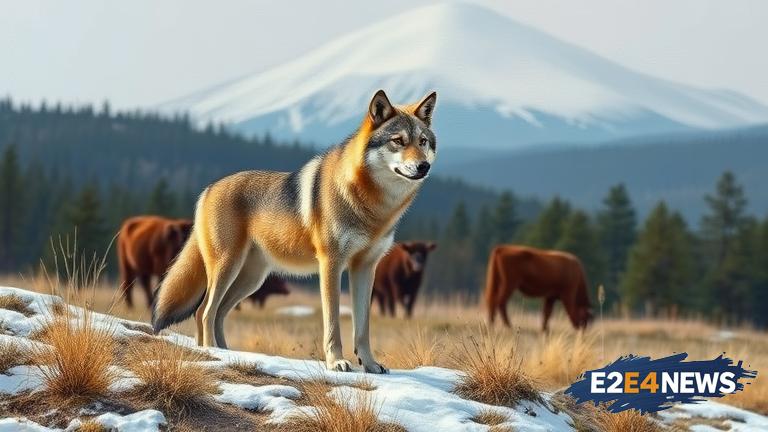The Colorado Parks and Wildlife Department has announced plans to cull an additional wolf in the state, following a series of cattle deaths attributed to wolf attacks. This decision has reignited the debate over wolf conservation and management in the state. The wolf population in Colorado has been a topic of discussion for years, with some advocating for their protection and others calling for control measures to prevent livestock losses. The state’s wolf management plan aims to balance the needs of wildlife conservation with those of the agricultural industry. However, the ongoing cattle deaths have put pressure on the authorities to take action. The decision to kill the wolf has been met with criticism from conservation groups, who argue that it is not an effective long-term solution to the problem. They claim that killing wolves can actually increase the likelihood of further attacks, as it disrupts the social structure of the pack. On the other hand, ranchers and farmers have welcomed the move, citing the significant economic losses they have suffered due to wolf attacks. The conflict between wildlife conservation and agricultural interests is not unique to Colorado, with many states facing similar challenges. The gray wolf was once listed as an endangered species, but its population has recovered significantly in recent years. However, the species is still protected under state and federal laws, and any management actions must be carefully considered to ensure compliance with these regulations. The Colorado Parks and Wildlife Department has stated that the decision to kill the wolf was not taken lightly, and that all other options had been exhausted. The agency has also emphasized the importance of finding a balance between conservation and livestock protection. The issue has sparked a wider debate about the role of humans in managing wildlife populations, and the need for more effective and sustainable solutions to conflicts between humans and wildlife. Some have suggested that non-lethal deterrents, such as guard animals or fencing, could be used to prevent wolf attacks on livestock. Others have proposed compensation schemes for farmers and ranchers who lose livestock to wolves. The situation in Colorado highlights the complexities of wildlife management and the need for a nuanced approach that takes into account the needs of all stakeholders. As the debate continues, it is clear that finding a solution that balances conservation and livestock protection will be a challenging but necessary task. The state’s wolf management plan is currently under review, and it is likely that the issue will be revisited in the coming months. In the meantime, the killing of the wolf has sparked a renewed focus on the need for effective and sustainable wildlife management practices. The use of lethal control measures is a controversial topic, with some arguing that it is necessary to protect human interests, while others claim that it is inhumane and ineffective. The Colorado Parks and Wildlife Department has stated that it will continue to monitor the situation and adjust its management strategies as needed. The agency has also emphasized the importance of public engagement and education in finding a solution to the conflict between humans and wolves. As the situation continues to unfold, it is clear that the debate over wolf conservation and management in Colorado is far from over. The state’s approach to wildlife management will be closely watched by other states and countries facing similar challenges. The outcome of this debate will have significant implications for the future of wolf conservation and management in Colorado and beyond.





